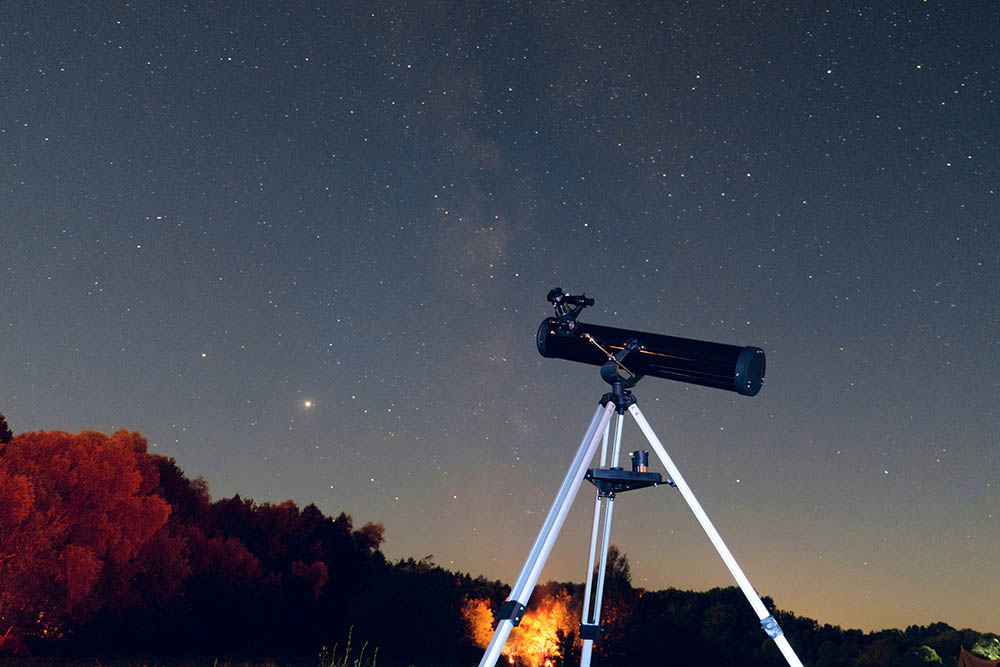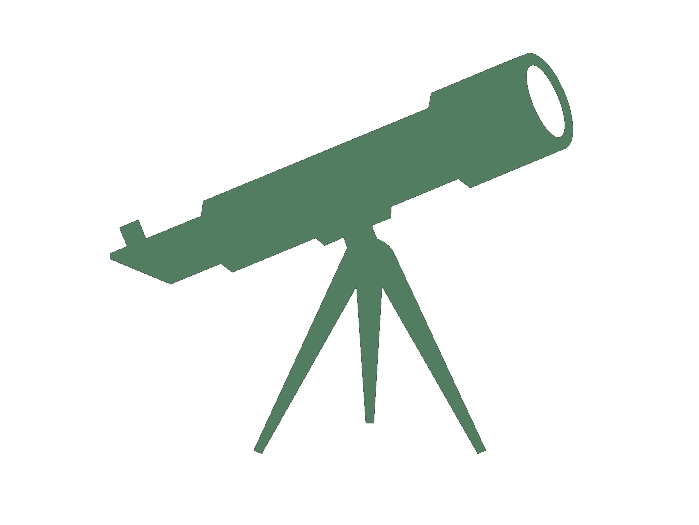19 Interesting Reflector Telescope Facts – 2024 Update
Last Updated on

If you are interested in astronomy, one of the best tools that you can get is a telescope. It’s more ideal for looking into the night sky than binoculars because it can condense the available light better, which helps produce a clearer image. There are two kinds of telescopes: reflector and refractor. Many people want to know the differences between them and how they work. Keep reading as we list several different facts about the reflector telescope to help you understand it better.

Interesting Reflector Telescope Facts
- Sir Isaac Newton invented the first reflecting telescope, which was an improvement over the refracting telescope because it enable you to see larger images more clearly. (SoftSchools)
- Most telescopes used by modern astronomers are the reflecting type. (SoftSchools)
- Reflecting telescopes are cheaper to make than refracting ones. (SoftSchools)
- The Hubble telescope was the largest reflecting telescope until the James Webb telescope in 2021. (SoftSchools)
- Despite the clear image and low cost of reflecting telescopes, refracting telescopes are better for beginners because they require precise maintenance. (SoftSchools)
- Some larger reflector telescopes enable the user to sit inside. (SoftSchools)
- You can combine reflector telescopes to create stronger telescopes. (SoftSchools)
- The Gran Telescopio Canarias in La Palma, Spain, is currently the largest reflecting telescope on Earth. However, at least three new telescopes are under construction that will be larger when completed. (SoftSchools)
- The disadvantage of using reflector telescopes is that the mirrors and lenses that create the image require near-continuous maintenance. (SoftSchools)
- Telescopes enable us to see light beyond the visible spectrum. (NASA)
- The James Webb Telescope is as tall as a 3-story building and as long as a tennis court. (NASA)
- Since the James Webb Telescopes cameras are sensitive to the sun, it has a large tennis court-sized shield to protect them. With the shield deployed, the temperature difference between the front and back of the telescope can be more than 600 degrees Fahrenheit. (NASA)
- Eighteen mirrors fit together like a puzzle to create the large mirror that the James Webb Telescope requires. The mirror needed to be in several smaller pieces to launch into space. (NASA)
- Besides mirrors, the James Webb telescope uses infrared cameras to see through dust that might otherwise block our view of new discoveries. (NASA)
- Most modern astronomers use the help of computers and digital cameras to view the image created by the telescope instead of looking through the eyepiece. They can also use computer technology to control the telescope remotely. (Fact Retriever)
- Telescopes can see 13 billion lightyears away, which scientists believe is also the age of the universe. (Fact Retriever)
- They should finish building the European Extremely Large Telescope in 2024, and it will become the largest telescope on Earth, with a 128-foot light-collecting surface. (Fact Retriever)
- Since the Hubble telescope began operating in 1990, it has traveled more than 3 billion miles and produced more than 45 terabytes of data. (Fact Retriever)
- The most important factor determining how well a telescope will work is the size of the diameter of the telescope’s lens or mirror. A larger surface will collect more light, producing a sharper image. (Fact Retriever)

What’s the difference between reflector and refractor telescopes?
The main difference between reflector and refractor telescopes is how they operate. A reflector telescope uses large mirrors to collect and reflect light where you need it to create a better image. A refracting telescope only uses lenses to get the job done, so the image isn’t as bright or clear. The lenses also cost more to manufacture than a mirror, so they tend to be more expensive.

Why are refracting telescopes better for beginners?
Refracting telescopes are usually the choice for beginners because they are easier to set up and use. These systems are usually closed and require little maintenance, so they are always ready to go. Reflecting telescopes are more complex and open, so you need to clean them constantly to remove the dust and dirt that can distort your view. Until you get the hang of setting them up, reflecting telescopes can take longer to start using.
Which telescopes are better, reflecting or refracting?
Once you learn how to use them the right way, both telescopes are useful for seeing different things. Refractors are good for seeing closer items, especially bright objects, like the moon. A reflecting telescope is better at seeing distant objects that produce little light.

Conclusion
There are many interesting facts about the reflecting telescope. These amazing devices have been helping us understand our world better for hundreds of years now, and we learn more every day. A telescope larger than the Hubble, the James Webb telescope, has just been launched, which will help us see further into space and even through dust clouds. In a few years, we’ll have several new telescopes that are larger than anything that we have now!
See also:
Featured Image Credit: N-sky, Shutterstock
About the Author Robert Sparks
Robert’s obsession with all things optical started early in life, when his optician father would bring home prototypes for Robert to play with. Nowadays, Robert is dedicated to helping others find the right optics for their needs. His hobbies include astronomy, astrophysics, and model building. Originally from Newark, NJ, he resides in Santa Fe, New Mexico, where the nighttime skies are filled with glittering stars.
Related Articles:
How to Clean a Refractor Telescope: Step-by-Step Guide
How to Clean a Telescope Eyepiece: Step-by-Step Guide
How to Clean a Rifle Scope: 8 Expert Tips
Monocular vs Telescope: Differences Explained (With Pictures)
What Is a Monocular Used For? 8 Common Functions
How to Clean a Telescope Mirror: 8 Expert Tips
Brightfield vs Phase Contrast Microscopy: The Differences Explained
SkyCamHD Drone Review: Pros, Cons, FAQ, & Verdict
